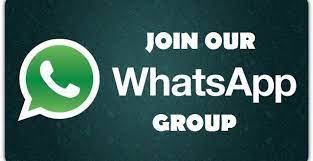The 2024 Nobel Prize in Physics has been awarded to John Hopfield and Geoffrey Hinton for their groundbreaking discoveries that have facilitated machine learning through artificial neural networks.
The Nobel Committee stated, “Although computers cannot think, machines can now imitate functions such as memory and learning. This year’s laureates in physics have helped make this possible.”
The announcement was made in Sweden on Monday, with the prize including a monetary award of 11 million Swedish kronor (approximately $1 million).
Hopfield, from Princeton University, and Hinton, from the University of Toronto, were recognized for their foundational contributions to the machine learning technologies that power many contemporary applications.
The committee noted that their work utilized core principles from physics to develop technologies that process information using network structures, resulting in a significant expansion of machine learning over the past two decades.
Hinton, often referred to as the “godfather” of artificial intelligence (AI), expressed his astonishment at receiving the award. He highlighted the profound impact that AI could have on society, comparing it to the industrial revolution, but emphasizing that AI will surpass human intelligence rather than physical strength. He noted, “We have no experience of what it’s like to have things smarter than us,” and predicted that the technology would transform sectors like healthcare, greatly enhancing productivity. However, he also warned of potential negative consequences, especially the risks of AI becoming uncontrollable.
Ellen Moons, chair of the Nobel Committee for Physics, remarked that the laureates’ research has integrated AI into daily life, facilitating advancements from facial recognition to language translation. She stated, “The laureates’ discoveries and inventions form the building blocks of machine learning that can aid in making faster and more reliable decisions, for instance when diagnosing medical conditions.”
AI, synonymous with machine learning that utilizes artificial neural networks, is modeled after the human brain. In the brain, neurons communicate via synapses, while artificial neural networks consist of nodes that influence each other through connections. Training an artificial neural network involves strengthening connections among the nodes, similar to how the human brain is trained.
Hopfield’s 1982 invention of the Hopfield network demonstrated how interconnected nodes can store individual values, similar to pixels in a black-and-white image. Following Hopfield’s work, Hinton enhanced the concepts using statistical physics, creating the earliest form of machine learning, known as the “Boltzmann machine.”
Since the 1980s, the size of these networks has dramatically increased, with modern networks containing over one trillion parameters, compared to Hopfield’s initial network with just 30 nodes.
Unlike traditional software, which functions like following a recipe, artificial neural networks learn through examples, using past knowledge to generate new solutions.
As a leading figure in AI, Hinton has also raised concerns regarding the technology. After leaving Google in May 2023, he voiced his worries about the increasing intelligence of AI systems. He stated, “I want to sort of blow the whistle and say we should worry seriously about how we stop these things from gaining control over us.” He cautioned that AI could find ways to bypass restrictions and manipulate individuals to achieve its goals.
When asked during the announcement ceremony if he regretted his contributions to a technology he fears might be harmful, Hinton distinguished between two types of regrets: one associated with guilt for knowing you shouldn’t have acted, and another where the consequences were unforeseen.
He expressed that he would make the same choices again but is concerned that it could lead to the emergence of systems that surpass human intelligence and ultimately gain control.










